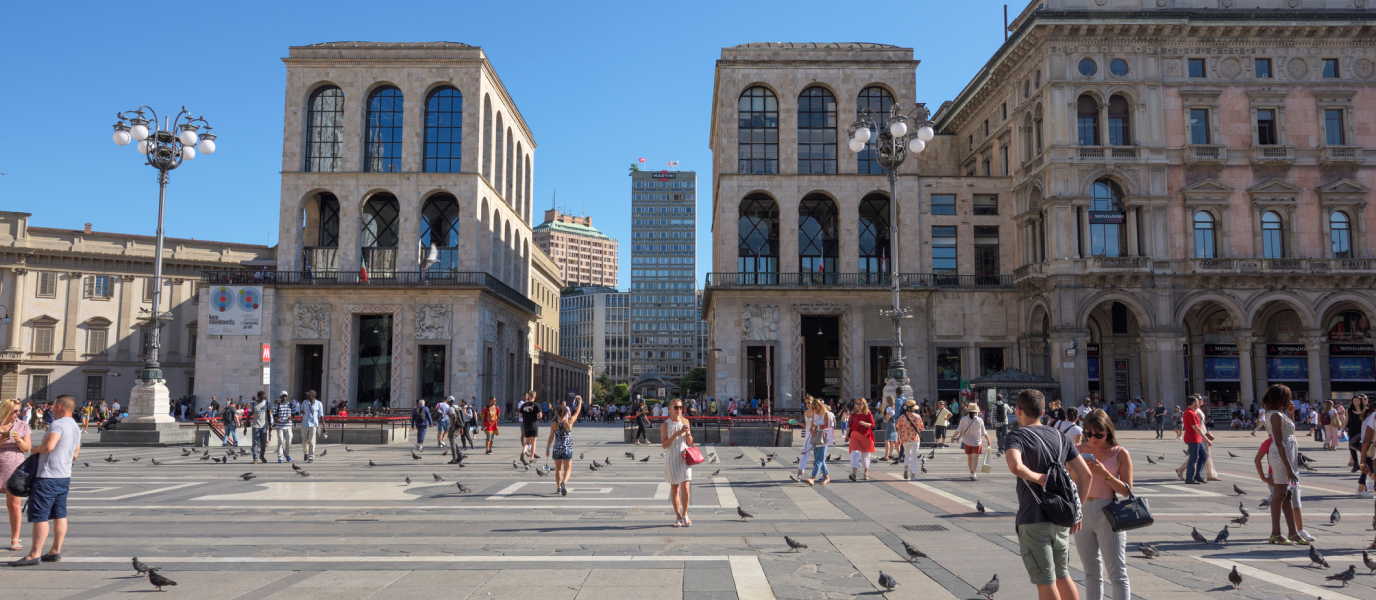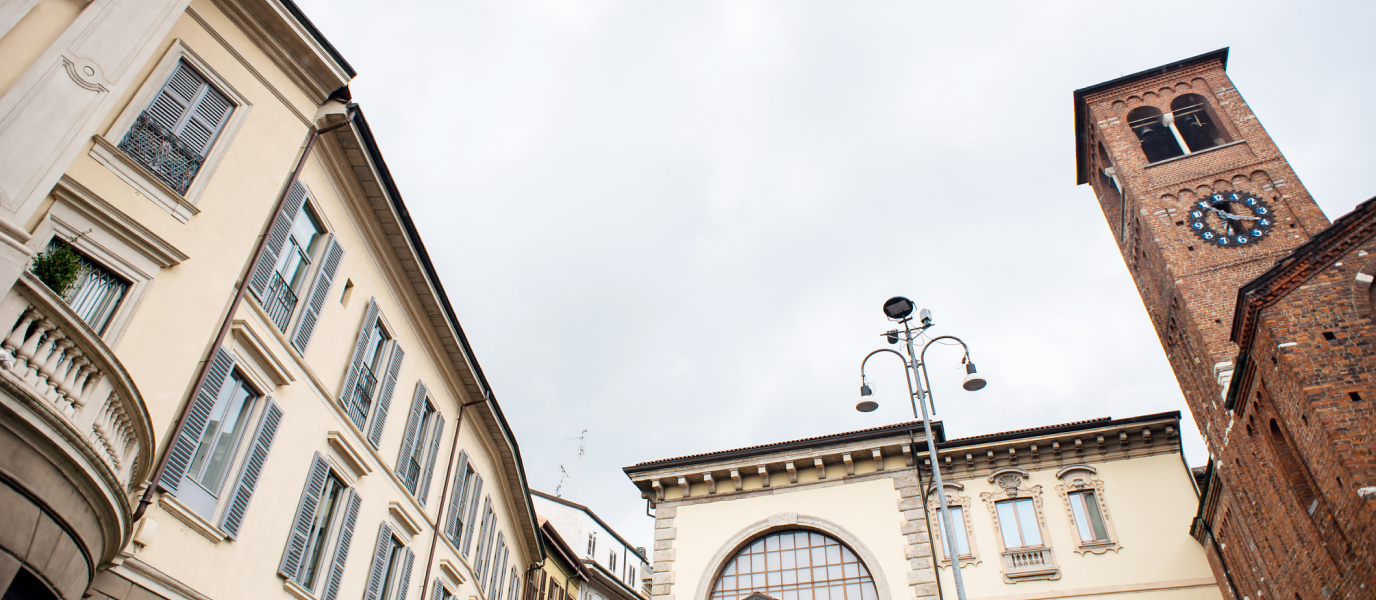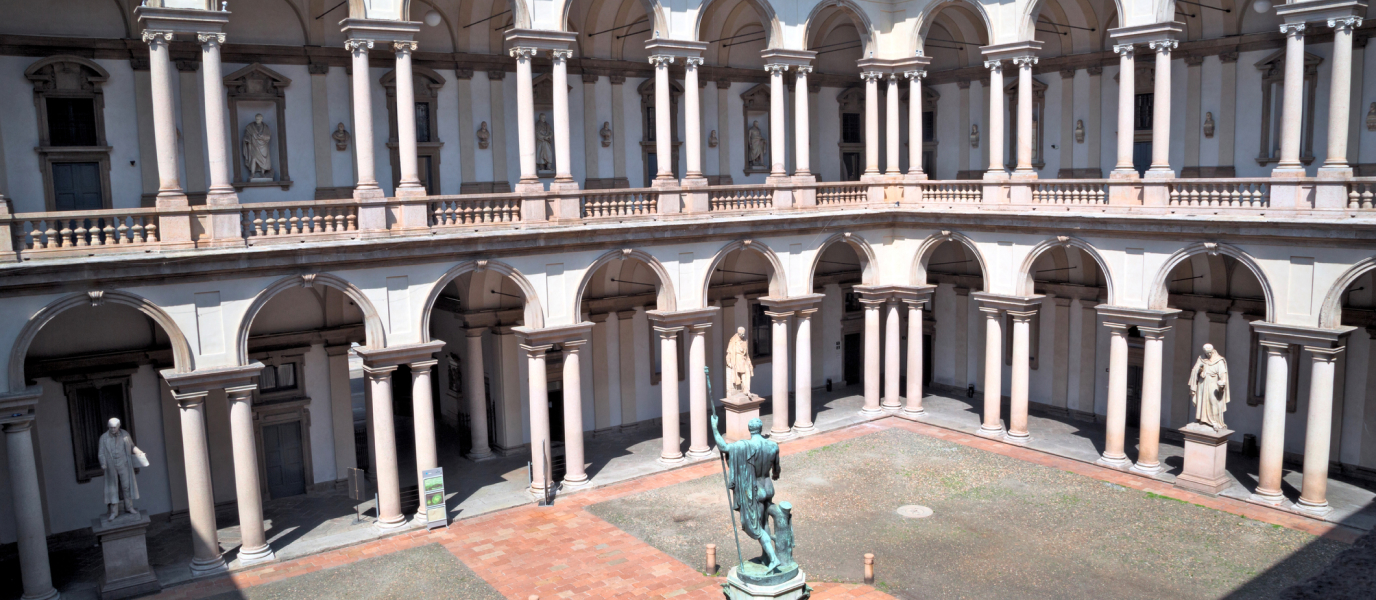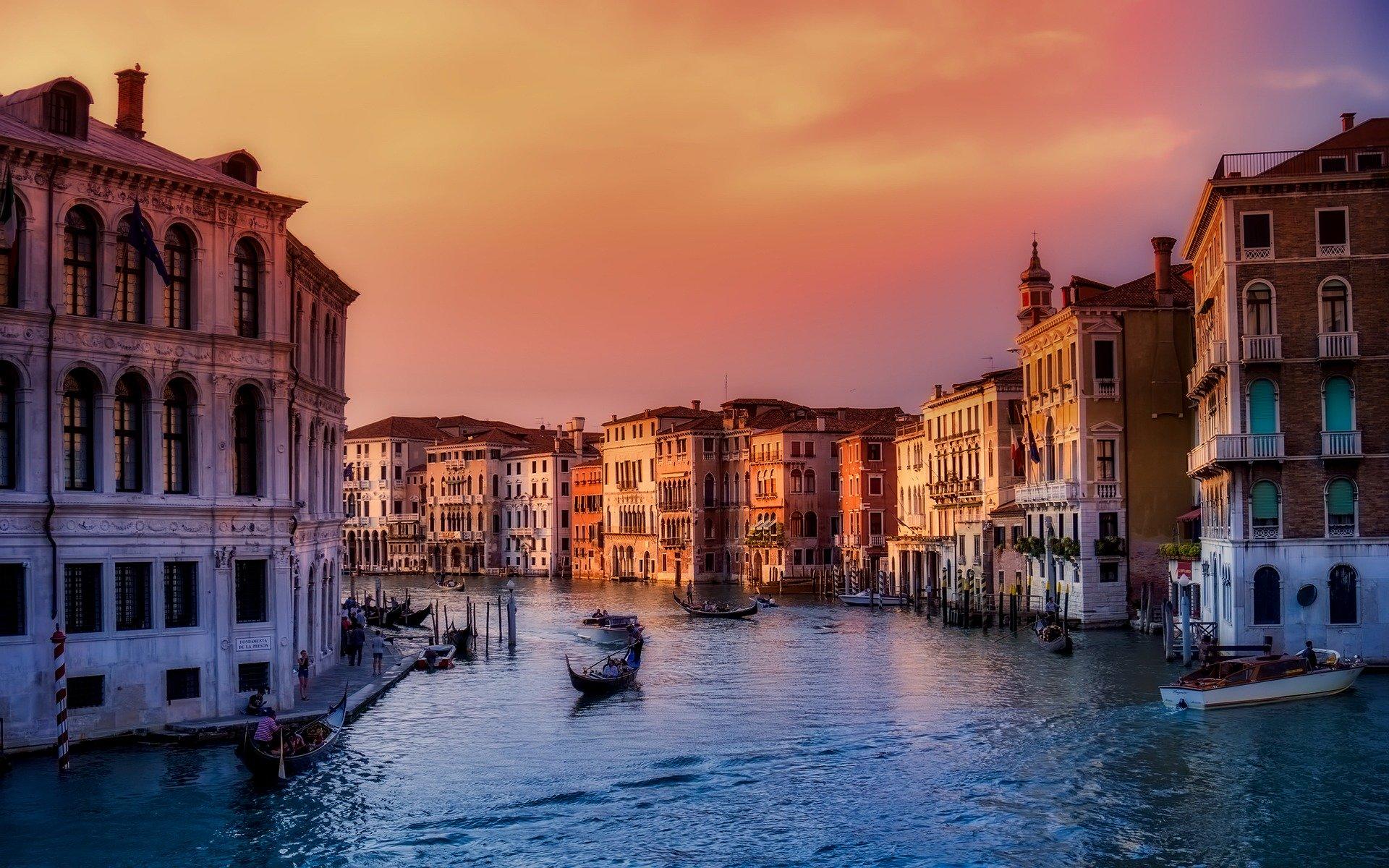Only a mere handful of paintings can justify making a special trip to a particular city. And Leonardo da Vinci’s works are definitely among them. If it’s worth travelling to Paris to see the Mona Lisa, then why wouldn’t the chance to see Il Cenacolo Vinciano (The Last Supper, in English), painted by the Tuscany-born genius on the wall of the refectory next-door to the Basilica of Santa Maria delle Grazie, not justify a trip to Milan?
Painted in the late fifteenth century, The Last Supper is one of the most ambitious, iconic and intriguing works in the history of Art. The mere fact that it has survived so many vicissitudes of fortune, including bombings, gives us reason to rejoice. But there’s much more to it than that. In recent years, this great mural has been the subject of enormous interest as a result of Dan Brown’s blockbuster novel, The Da Vinci Code, which has enjoyed worldwide fame.
We trace the incredible history of Il Cenacolo Vinciano, its artistic inspiration, the mysteries surrounding it and, of course, the best way to reserve the sought-after tickets to see Leonardo da Vinci’s masterpiece.
The history of Leonardo da Vinci’s The Last Supper
Leonardo da Vinci arrived at the court of Ludovico Sforza in Milan in 1483, in the role of emissary to the Florentine gentleman, Lorenzo de Medicis. Da Vinci was welcomed to the Duke’s court as an engineer, and given the title Apeles florentino [The Florentine Apelles], a title which the Duke reserved for great painters. It is thought that Da Vinci felt stimulated by the atmosphere in Milan, as his time in Florence had heightened a sense of isolation in the face of the prevailing intellectual climate in the Tuscan capital which was becoming more and more Neoplatonic and cryptic.
During the artist’s period in Milan, he would paint three great masterpieces: the mural of the Last Supper in the refectory of Santa Maria delle Grazie, and the two versions of the Virgin of the Rocks.
Leonardo dedicated no less than four years to The Last Supper. He was given the task of decorating the Dominican convent’s refectory by Ludovico il Moro in 1494, and the work was completed in 1498. The artist took on the commission as a creative challenge, judging by the enormous number of plans and notes he made as he worked on the project. Leonardo’s great interest in science led him to experiment with new techniques and materials for painting frescoes, although he did not make good choices. The materials he used accelerated the deterioration of the mural, a process that began during the artist’s own lifetime.
The heat and steam produced by the convent’s kitchen, close to the mural, did not help to preserve it, nor did the fact that the Dominican Order had a door fitted — right in the middle of the painting!
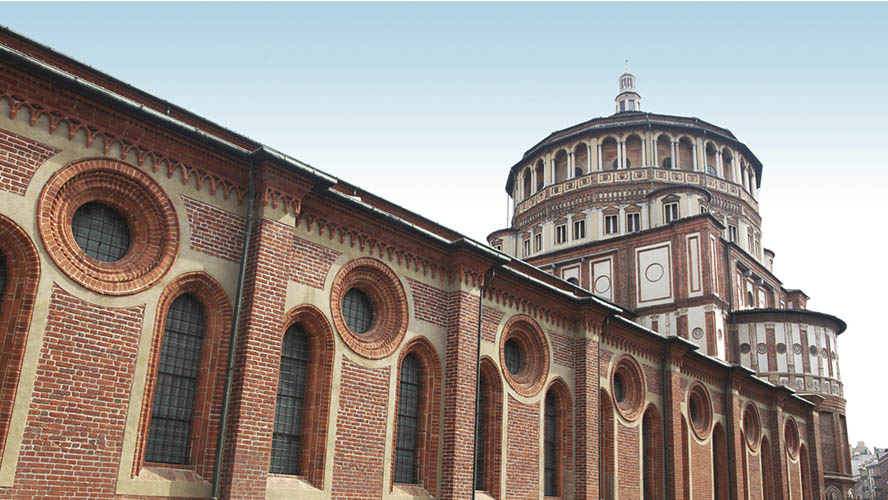
From the eighteenth century onwards, restoration projects were undertaken, although the decline in the mural’s condition was not halted. During the Napoleonic Wars in the early nineteenth century, French troops even converted the refectory housing The Last Supper into a stable! But the worst damage was sustained in the twentieth century, during the Second World War. During that fateful time, the Allied bombardments reduced the church to rubble, although ‘miraculously’ the wall with the Da Vinci fresco remained standing.
From then onwards, efforts have been made to take great care of this artistic masterpiece, and successive restoration initiatives have been undertaken. One of the most ambitious projects lasted 21 years — from 1978 until 1999 — during which time the refectory was closed to the public, and the painting was to some extent restored to its former glory.
Why is Leonardo’s Cenacolo Vinciano so important?
But why does this fresco merit such an important place in the history of art? The Last Supper is really an iconographic motif that has been reproduced time and again at any number of Christian places of worship. What is more, according to the Catholic Church, it was during the Last Supper that Christ decreed the sacrament of the Eucharist. However, Da Vinci did not choose to portray the precise moment when the Redeemer uttered the famous words, “Take and eat; this is my body, which will be given up for you…” (Matthew 26: 26-29; Mark 14: 22-25; Luke 22: 19-20), the scene that had been depicted by the artists who preceded him.
Instead, Leonardo imagines and paints the moment when Christ reveals that he has been betrayed by Judas Iscariot (“It is the one to whom I will give this piece of bread when I have dipped it”, (John 13:26). In this way, the artist reinvented an iconographic motif and made it his own. Thus he succeeds in portraying a scene charged with psychological tension, in which the faces and body language of those present (and especially the hands of Christ, Judas, St. Peter, and so on) register, or feign, emotions ranging from shock to indignation, in a dramatic contrast with the serene and resigned expression of the Saviour.
Apart from his choice of the precise moment for the subject of his work, Da Vinci shows great awareness of his fresco’s location: the convent’s refectory or dining room — making the painting a trompe l’oeil that strongly reflected contemporary taste. By his use of perspective, Leonardo integrates The Last Supper into the refectory, as if the Apostles were sitting at a table there. And he does so with an outstandingly eurhythmic sense of the setting’s configuration, demonstrating the skills he acquired as the gifted pupil both of the Renaissance theorist Leon Battista Alberti, and of the architect of Santa Maria delle Grazie.
The vanishing point of the painting’s perspective is at its exact centre — the head of Christ himself. Behind Christ’s head is the central window where sight is lost thanks to an imaginary landscape painted using the ‘sfumato’ technique invented by Da Vinci himself.
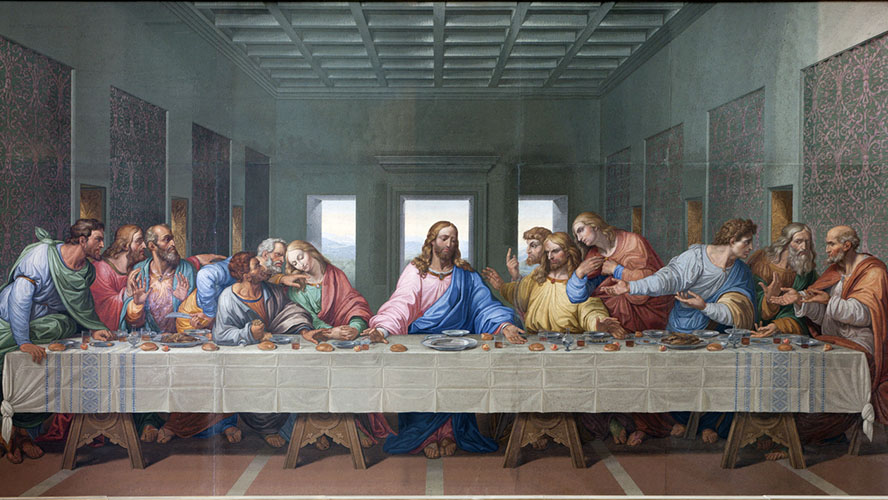
The Last Supper’s Da Vinci Code
Typically for a work of its time, beneath the formal veneer of a fresco, The Last Supper is packed with a rich symbolism that has only increased over time, thanks to the proliferation of endless proposed interpretations. Many of which are utterly ridiculous, it must be said.
One which has attracted widespread interest in recent years is undoubtedly Dan Brown’s analysis in his bestselling novel, The Da Vinci Code. If, 17 years after its publication, there is anyone who has not read the book or seen the faithful film adaptation by Ron Howard (but intends to do so), be warned that the next paragraph contains spoilers.
The novel draws attention to the fact that on the table at The Last Supper, the Holy Grail (the Eucharist cup containing the wine representing the blood of Christ) is missing. But according to Brown, the Holy Grail is, in fact, present symbolically, in the ‘V’ shape formed by the space between Christ and the person sitting to his right, traditionally understood to be the Apostle St. John. The North American writer however, identifies this figure, with its feminine features, as being that of the thirteenth Apostle, none other than Mary Magdalene, and the eventual wife of Christ. According to some heresies, the pair were the ancestors of the Merovingian dynasty.
This is said to explain the threatening expression of St. Peter who was, let us not forget, the founder of the Catholic Church, who is whispering something to St. John / Mary Magdalene, whilst pointing to his/her neck and holding a dagger in his other, strangely foreshortened, hand. In front of both is Judas Iscariot who is drawing away, perhaps after having revealed to Christ the secret of the betrayal? And what if Jesus is actually revealing in the Da Vinci mural that Mary Magdalene is taking on the mission of spreading the Word of God?
This is one of the most recent interpretations, although there are many other (even more preposterous) notions, such as the psychoanalytic argument posited by Sigmund Freud in his essay, ‘Leonardo da Vinci, A Memory of His Childhood’. These interpretations claim to clearly identify the allegedly homosexual drive of Leonardo da Vinci in certain elements of the mural.
How to see Il Cenacolo Vinciano
It is not easy to visit The Last Supper, due to its poor state of preservation. To help conserve the masterpiece, access is limited to 30 people every 15 minutes. While this is undeniably a very short time to appreciate a work of art, it is nevertheless longer than the average time spent looking at a painting in any museum.
Admission must be booked at least three weeks in advance. It is important not only to be punctual, but actually to arrive at least half an hour earlier than the time set for your visit, as you would not want to risk missing your turn to see this great masterpiece.
No cameras or backpacks are allowed into the room where The Last Supper is displayed. There is a facility to leave belongings, but with a time limit of 30 minutes.
Useful information:
Official website: https://cenacolovinciano.org/
How to get there
- By Metro: The nearest Metro stop to Il Cenacolo Vinciano (Piazza Santa Maria delle Grazie 2) is Carlona.
Admission and tickets
Book online via the official website.




































































![The Cenacolo Vinciano [The Last Supper], Da Vinci’s masterpiece, is in Milan The Cenacolo Vinciano [The Last Supper], Da Vinci’s masterpiece, is in Milan](https://www.barcelo.com/guia-turismo/wp-content/uploads/2024/09/ok-cenacolo-vinciano.jpg)
